
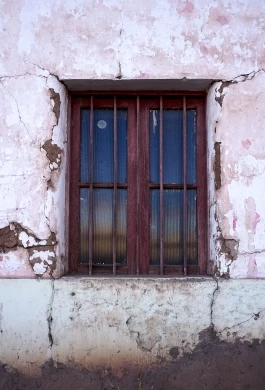
RUINS OF THE FUTURE 2025
The Ruins of the Future is an exhibition that seeks to raise awareness about the tangible and intangible heritage of the Coquimbo region, particularly the province of Choapa. It refers to its history as a site of the Diaguita culture, its link to astronomy, and its status as a seismic territory. Through various media, including video art, installations, and photography, the artist seeks to rescue past ways of life, highlighting rural life, the landscape, and adobe architecture.
Adobe constructions are the protagonists here, understood as ruins that try to resist the passage of time, since due to their lack of maintenance and restoration in the face of events such as fires or earthquakes, many of these houses are now deteriorated or completely abandoned. The exhibition offers a journey through photographs, sound recordings of the inhabitants, the projection of a video performance in an abandoned adobe house, and the installation of rescued materials such as an adobe wall moved from its original location, and found doors and windows. The proposal also deals with past life around the Choapa River and how a long drought significantly changed the inhabitants' relationship with it and its surrounding landscapes. This is represented by the exhibition of an audiovisual television archive on “camera races” along with two installation pieces made with tire cameras. The first is an installation of cameras decorated with Diaguita patterns, while the second consists of a fabric that references the Chacana cross. Finally, it includes the exhibition of two modified astronomical plates, a video performance related to them, and a digital work in the form of a map, which combines a photographic record of the 2015 earthquake in Illapel with the current image of the same place, where Chinese stores and large commercial warehouses proliferate.
Nathalie Goffard


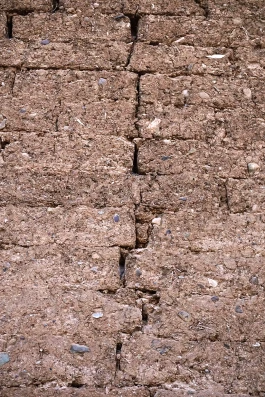
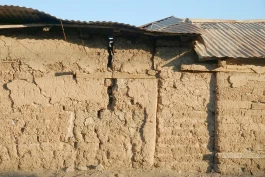
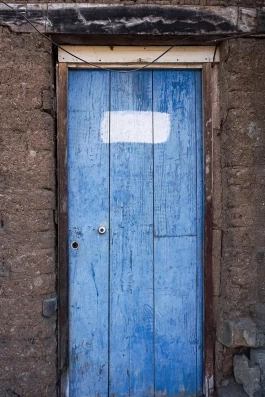

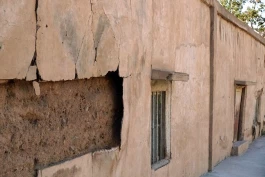
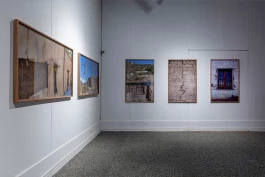


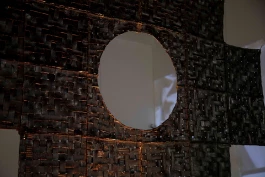
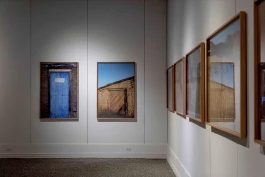


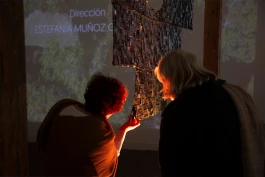
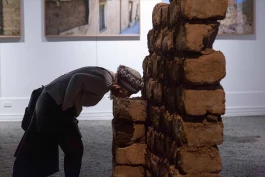

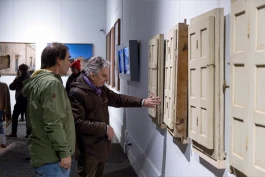
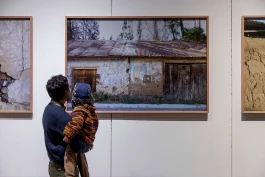
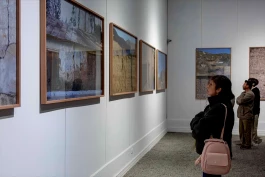

RUINAS DEL FUTURO 2025
The Ruins of the Future is an exhibition that seeks to raise awareness about the tangible and intangible heritage of the Coquimbo region, particularly the province of Choapa. It refers to its history as a site of the Diaguita culture, its link to astronomy, and its status as a seismic territory. Through various media, including video art, installations, and photography, the artist seeks to rescue past ways of life, highlighting rural life, the landscape, and adobe architecture.
Adobe constructions are the protagonists here, understood as ruins that try to resist the passage of time, since due to their lack of maintenance and restoration in the face of events such as fires or earthquakes, many of these houses are now deteriorated or completely abandoned. The exhibition offers a journey through photographs, sound recordings of the inhabitants, the projection of a video performance in an abandoned adobe house, and the installation of rescued materials such as an adobe wall moved from its original location, and found doors and windows. The proposal also deals with past life around the Choapa River and how a long drought significantly changed the inhabitants' relationship with it and its surrounding landscapes. This is represented by the exhibition of an audiovisual television archive on “camera races” along with two installation pieces made with tire cameras. The first is an installation of cameras decorated with Diaguita patterns, while the second consists of a fabric that references the Chacana cross. Finally, it includes the exhibition of two modified astronomical plates, a video performance related to them, and a digital work in the form of a map, which combines a photographic record of the 2015 earthquake in Illapel with the current image of the same place, where Chinese stores and large commercial warehouses proliferate.
Nathalie Goffard






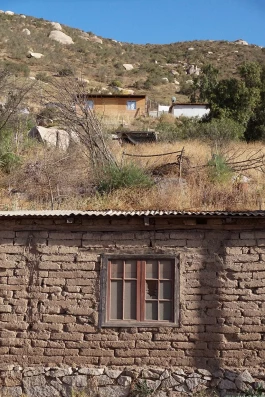



Photo credits: Bodegón Cultural Los Vilos | Benjamín Matte

Photo credits: Bodegón Cultural Los Vilos | Benjamín Matte

Photo credits: Bodegón Cultural Los Vilos | Benjamín Matte

Photo credits: Bodegón Cultural Los Vilos | Benjamín Matte

Photo credits: Bodegón Cultural Los Vilos | Benjamín Matte

Photo credits: Bodegón Cultural Los Vilos | Benjamín Matte

Photo credits: Bodegón Cultural Los Vilos | Benjamín Matte

Photo credits: Bodegón Cultural Los Vilos | Benjamín Matte

Photo credits: Bodegón Cultural Los Vilos | Benjamín Matte

Photo credits: Bodegón Cultural Los Vilos | Benjamín Matte

Photo credits: Bodegón Cultural Los Vilos | Benjamín Matte

Photo credits: Bodegón Cultural Los Vilos | Benjamín Matte

Photo credits: Bodegón Cultural Los Vilos | Benjamín Matte